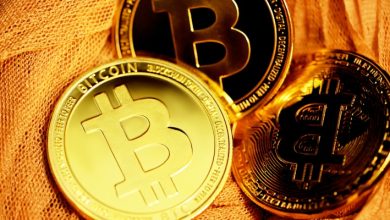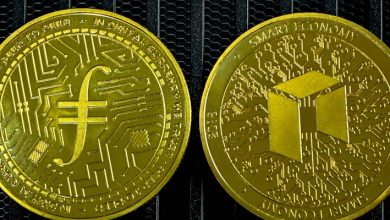How to Analyze Token Supply and Distribution Models

- Understanding token supply and distribution
- Key factors to consider when analyzing token supply models
- The importance of transparency in token distribution
- Comparing centralized vs. decentralized token supply models
- Analyzing the impact of token distribution on price volatility
- Strategies for evaluating token supply and distribution models
Understanding token supply and distribution
Understanding token supply and distribution is crucial when analyzing a cryptocurrency project. The token supply refers to the total number of tokens that will ever be created for a particular cryptocurrency. This number can vary greatly depending on the project, with some having a fixed supply while others may have an inflationary model where new tokens are continuously minted.
Token distribution, on the other hand, refers to how these tokens are allocated among various stakeholders such as investors, developers, advisors, and the community. A well-thought-out distribution model is essential for ensuring fairness and avoiding centralization of control.
When evaluating a cryptocurrency project, it is important to look at both the token supply and distribution models to understand how they may impact the token’s value and long-term viability. A project with a large token supply and uneven distribution may face challenges in maintaining price stability and decentralization.
In contrast, a project with a limited token supply and a well-balanced distribution model may have a better chance of achieving widespread adoption and maintaining a healthy ecosystem. By carefully analyzing these factors, investors can make more informed decisions about which projects to support and which to avoid.
Key factors to consider when analyzing token supply models
When analyzing token supply models, there are several key factors to consider that can have a significant impact on the overall value and potential success of a token. One important factor to consider is the total supply of tokens issued by the project. This can vary greatly depending on the project, with some tokens having a limited supply while others may have an unlimited or inflationary supply.
Another important factor to consider is the distribution of tokens. How are the tokens being distributed among investors, team members, advisors, and the project itself? A fair and transparent distribution model is crucial for building trust and ensuring that the token is not concentrated in the hands of a few individuals or entities.
Additionally, it is important to consider the token release schedule. Are all tokens being released at once, or are they being released gradually over time? A gradual release schedule can help prevent token price manipulation and ensure a more stable market for the token.
Furthermore, the utility of the token is a key factor to consider. What purpose does the token serve within the project ecosystem? Does it have real-world value and utility, or is it simply a means of speculation? Tokens with a clear utility and use case are more likely to hold their value over time.
Lastly, it is important to consider the governance structure of the project. How are decisions made regarding the token supply and distribution? A transparent and democratic governance structure can help ensure that the interests of all token holders are taken into account.
Overall, analyzing token supply models requires a thorough understanding of these key factors in order to make informed investment decisions. By carefully considering these factors, investors can better assess the long-term potential of a token and mitigate risks associated with token supply and distribution.
The importance of transparency in token distribution
Transparency in token distribution is crucial for investors and users to have a clear understanding of how tokens are allocated and circulated within a project. When a token supply and distribution model is transparent, it helps to build trust and credibility among the community. This transparency also allows stakeholders to assess the fairness of the distribution and evaluate the potential impact on token value.
By providing detailed information on token distribution, projects can demonstrate their commitment to accountability and integrity. This level of transparency can help to attract more investors and users who are looking for projects that operate with honesty and openness. Additionally, transparent token distribution can help to prevent market manipulation and ensure a more stable and sustainable ecosystem.
When analyzing token supply and distribution models, it is essential to look for projects that prioritize transparency in their operations. By understanding how tokens are distributed, investors can make more informed decisions about whether to participate in a project. Ultimately, transparency in token distribution is not only beneficial for investors and users but also for the long-term success and sustainability of a project.
Comparing centralized vs. decentralized token supply models
One important aspect to consider when analyzing token supply and distribution models is whether the project follows a centralized or decentralized approach. In a centralized token supply model, tokens are controlled by a single entity or a small group of individuals. This can lead to concerns about transparency and the potential for manipulation. On the other hand, a decentralized token supply model distributes tokens across a wide range of participants, reducing the risk of centralized control and promoting a more democratic system.
In a centralized token supply model, the token issuer has full control over the supply of tokens. This means they can decide when and how many tokens to release, which can impact the token’s value and overall market dynamics. Additionally, centralized token models may raise questions about the project’s commitment to decentralization and trustlessness. Investors and users may be hesitant to participate in projects with centralized token models due to these concerns.
Conversely, decentralized token supply models aim to distribute tokens more evenly among participants. This can help prevent a single entity from manipulating the token supply or market price. Decentralized models often use mechanisms such as token sales, airdrops, and mining to distribute tokens to a wider audience. By involving more participants in the distribution process, decentralized token models can create a more inclusive and diverse ecosystem.
When comparing centralized and decentralized token supply models, it is important to consider the implications for the project’s long-term sustainability and community engagement. Centralized models may offer more control and flexibility for the token issuer, but they can also lead to centralization risks and potential conflicts of interest. Decentralized models, on the other hand, prioritize transparency and community involvement, but may face challenges in governance and decision-making processes.
Ultimately, the choice between centralized and decentralized token supply models will depend on the project’s goals, values, and target audience. By carefully analyzing the trade-offs and benefits of each approach, token issuers can design a supply and distribution model that aligns with their vision for the project and fosters trust and engagement among stakeholders.
Analyzing the impact of token distribution on price volatility
When analyzing the impact of token distribution on price volatility, it is crucial to consider how the supply and distribution models of a token can affect its market dynamics. The way tokens are distributed among holders can have a significant influence on the price fluctuations of the token.
One key factor to consider is the concentration of tokens among a small number of holders. If a large portion of tokens is held by a few individuals or entities, this could lead to increased price volatility as these holders have the power to manipulate the market. On the other hand, a more evenly distributed token supply can help stabilize prices by preventing any single entity from having too much control over the market.
Another important aspect to analyze is the rate at which new tokens are being released into circulation. A high inflation rate, where a large number of new tokens are constantly being introduced, can lead to price depreciation as the market becomes saturated with supply. Conversely, a low inflation rate or a deflationary token model, where the token supply decreases over time, can help maintain price stability and even drive up prices due to scarcity.
In conclusion, understanding the token distribution and supply models of a cryptocurrency is essential for predicting and managing price volatility. By assessing factors such as token concentration among holders and inflation rates, investors can make more informed decisions about the potential risks and rewards associated with a particular token.
Strategies for evaluating token supply and distribution models
One effective way to assess token supply and distribution models is to carefully analyze the total supply of tokens available and how they are distributed among various stakeholders. This can provide valuable insights into the potential value and stability of the token, as well as the level of decentralization within the network.
Another important factor to consider is the distribution schedule, which outlines how and when tokens will be released into circulation. A well-thought-out distribution schedule can help prevent market manipulation and ensure a fair and transparent distribution process.
Additionally, it is essential to evaluate the distribution of tokens among different stakeholders, such as founders, investors, and the community. A diverse and equitable distribution of tokens can help promote long-term sustainability and prevent centralization of control within the network.
Furthermore, analyzing the lock-up periods for tokens held by different stakeholders can provide valuable insights into the level of commitment and confidence in the project. Longer lock-up periods can indicate a stronger belief in the project’s long-term success.
Overall, by carefully evaluating token supply and distribution models, investors can make more informed decisions about the potential value and stability of a token. It is essential to consider various factors, such as total supply, distribution schedule, stakeholder distribution, and lock-up periods, to gain a comprehensive understanding of the token’s ecosystem.




